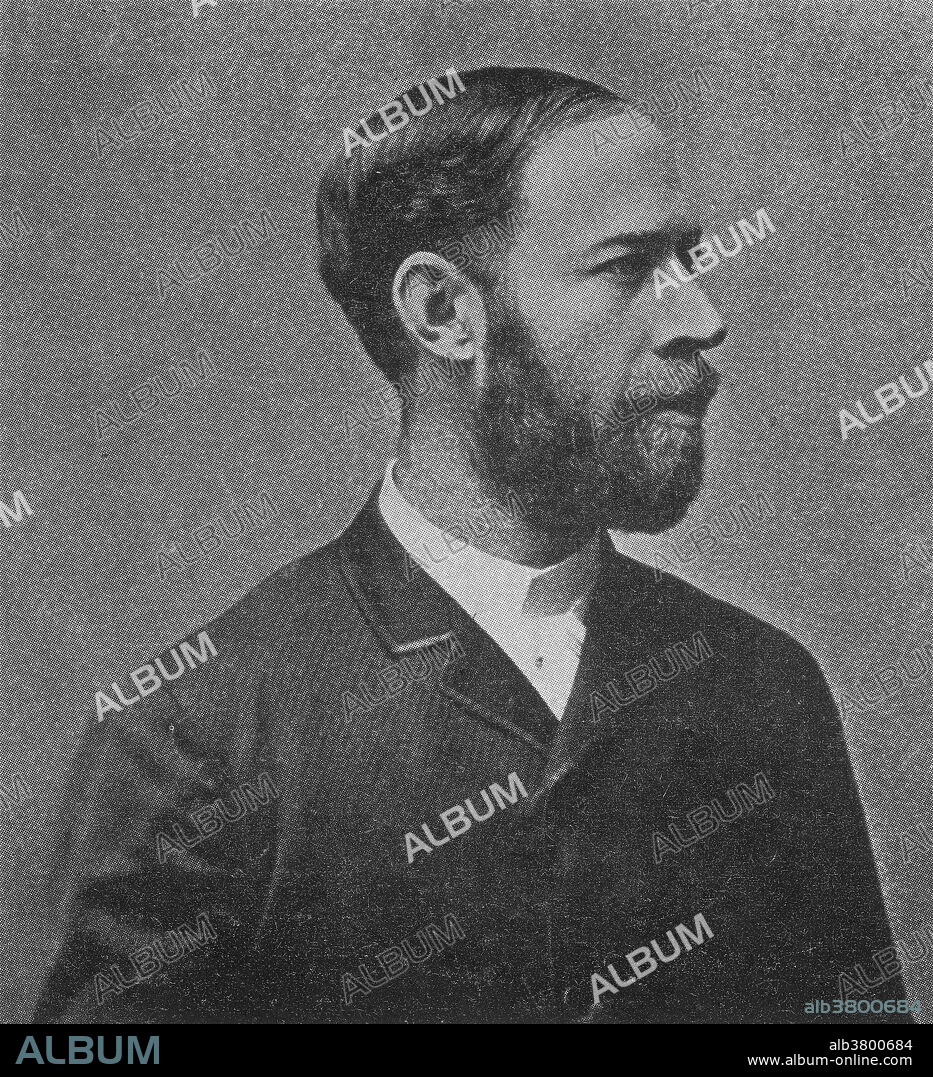alb3800684
Heinrich Rudolf Hertz, German Physicist

|
Ajouter à une autre Lightbox |
|
Ajouter à une autre Lightbox |



Avez-vous déjà un compte? S'identifier
Vous n'avez pas de compte ? S'inscrire
Acheter cette image

Titre:
Heinrich Rudolf Hertz, German Physicist
Légende:
Voir la traduction automatique
Heinrich Rudolf Hertz (February 22, 1857 - January 1, 1894) was German physicist and discoverer of radio waves. Hertz studied at Berlin, gaining his PhD in 1880. He then moved to Kiel, where he started investigations in electromagnetism. He used Maxwell's theories to construct an oscillating electrical circuit with a spark gap and proved the existence of radio waves in the late 1880s. He used two rods to serve as a receiver and a spark gap as the receiving antennae. Where the waves were picked up, a spark would jump. Hertz showed in his experiments that these signals possessed all of the properties of electromagnetic waves. With this oscillator, Hertz solved two problems. First, timing Maxwell's waves. He had demonstrated, in the concrete, what Maxwell had only theorized - that the velocity of radio waves was equal to the velocity of light (this proved that radio waves were a form of light). Second, Hertz found out how to make the electric and magnetic fields detach themselves from wires and go free as Maxwell's waves. He died from blood poisoning at the age of 36 while a professor of physics at Bonn.
Crédit:
Album / Science Source / New York Public Library
Autorisations:
Modèle: Non - Propriété: Non
Questions sur les droits?
Questions sur les droits?
Taille de l'image:
3125 x 3431 px | 30.7 MB
Taille d'impression:
26.5 x 29.0 cm | 10.4 x 11.4 in (300 dpi)
Mots clés:
ALLEMAND • ALLEMANDE • CÉLÈBRE • CELEBRITE • ELECTROMAGNETISME • EUROPÉEN • HOMME • PERSONNAGES • PERSONNALITÉS • PERSONNE • SEPTICEMIE
 Pinterest
Pinterest Twitter
Twitter Facebook
Facebook Copier le lien
Copier le lien Email
Email
